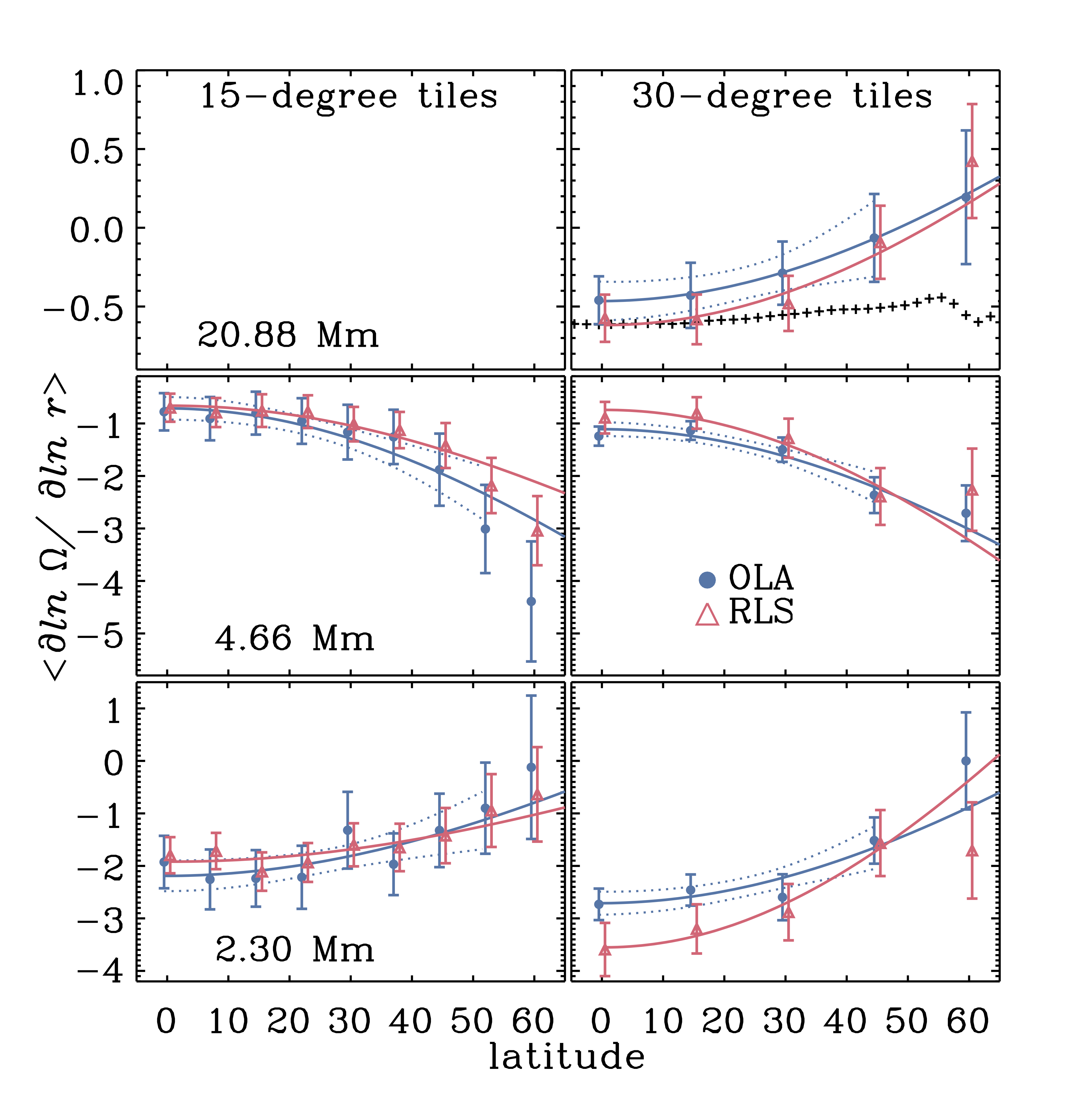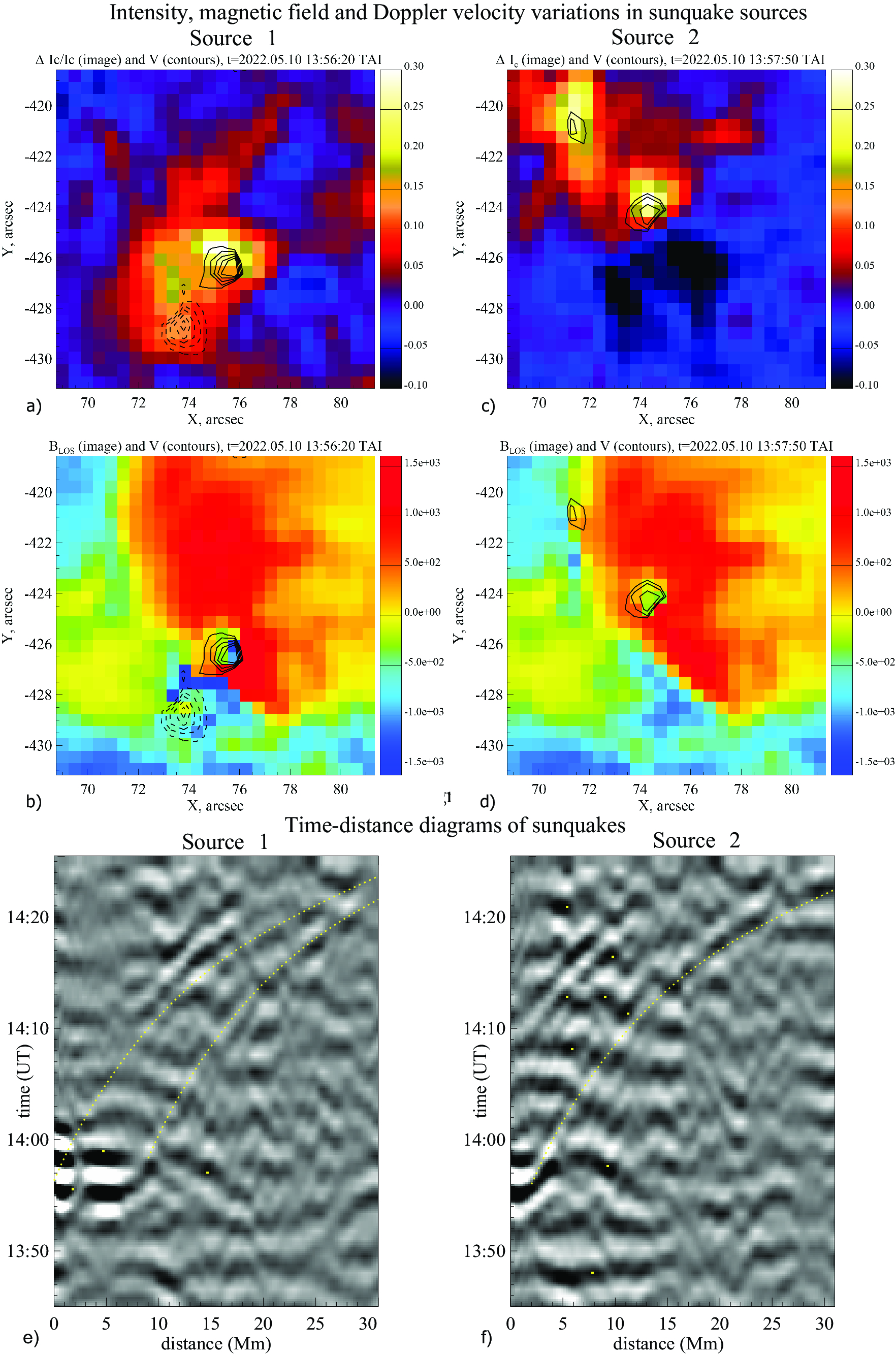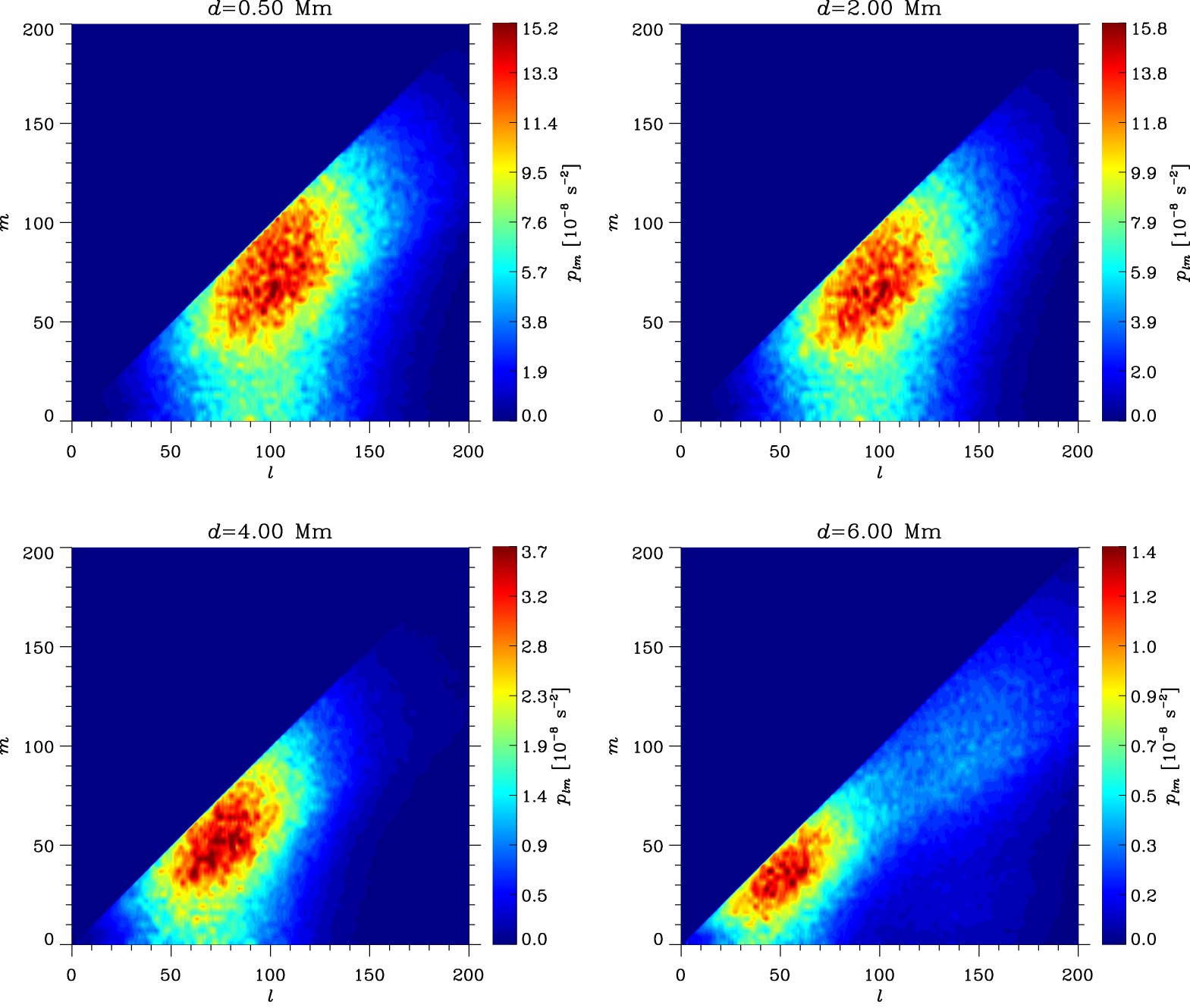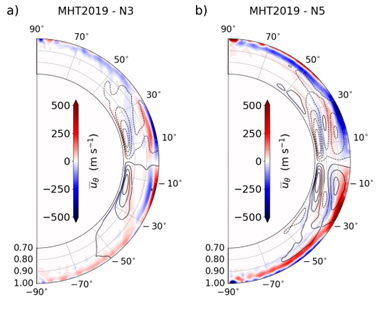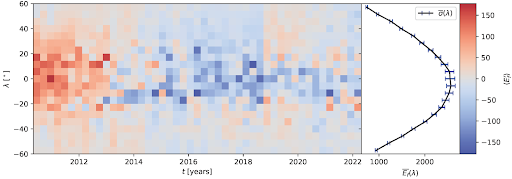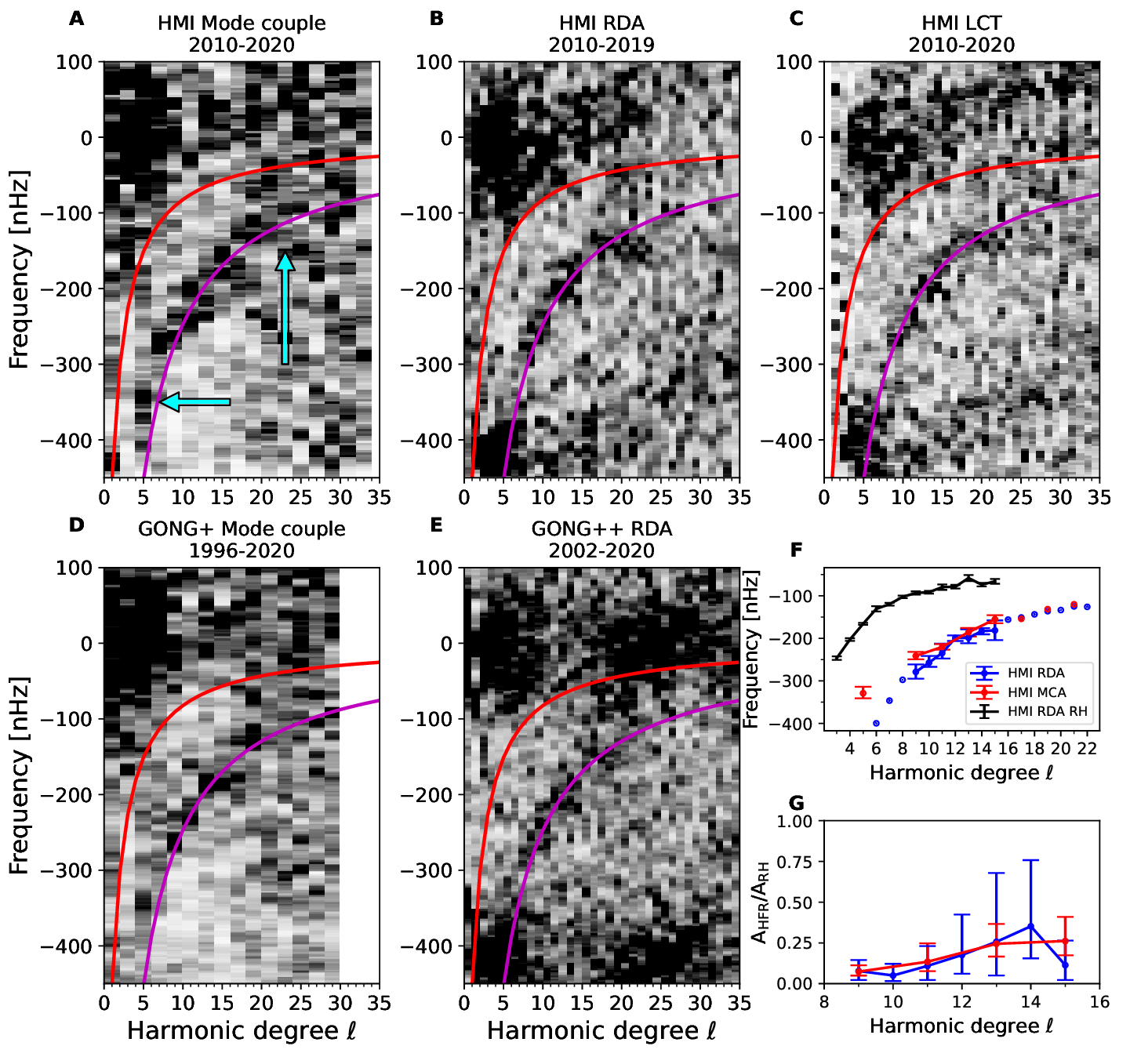Category Archives: Helioseismology
203. Exploring Substructure of the Near-Surface Shear Layer of the Sun
198. Spectro-Polarimetric Properties of Sunquake Sources and the Origin of Sunquakes
196. Observations of Rossby wave parameter variations during solar cycle 24
189. Spatial Scales and Time Variation of Solar Subsurface Convection
Spectral analysis of the spatial structure of solar subphotospheric convection is carried out for subsurface flow maps. It is found that the horizontal flow scales increase rapidly with depth, from supergranulation to giant-cell values. The total power of the convective flows is found to be anticorrelated with the sunspot number variation over the solar activity cycle in shallow subsurface layers and positively correlated at larger depths.
188. Constraining Global Solar Models through Helioseismic Analysis
Forward modeling is applied to numerous global hydrodynamic solar models, and helioseismic measurements on the meridional circulation are made using the forward modeling results. Comparison against the observational measurements shows significant differences, indicating our insufficient knowledge on either the global hydrodynamic modeling or the helioseismic inversions.
186. Solar-Cycle Variation of quiet-Sun Magnetism and Surface Gravity Oscillation Mode
183. Phase shifts measured in evanescent acoustic waves above the solar photosphere and their possible impacts on local helioseismology
Analysis on high-spectral resolution data shows that oscillations in the higher atmosphere lead those in the lower atmosphere by an order of 1 s when their frequencies are below about 3.0 mHz, and lags behind by about 1 s when their frequencies are above 3.0 mHz. These phase shifts in the evanescent waves pose great challenges to the interpretation of some local helioseismic measurements that involve data acquired at different atmospheric heights.


